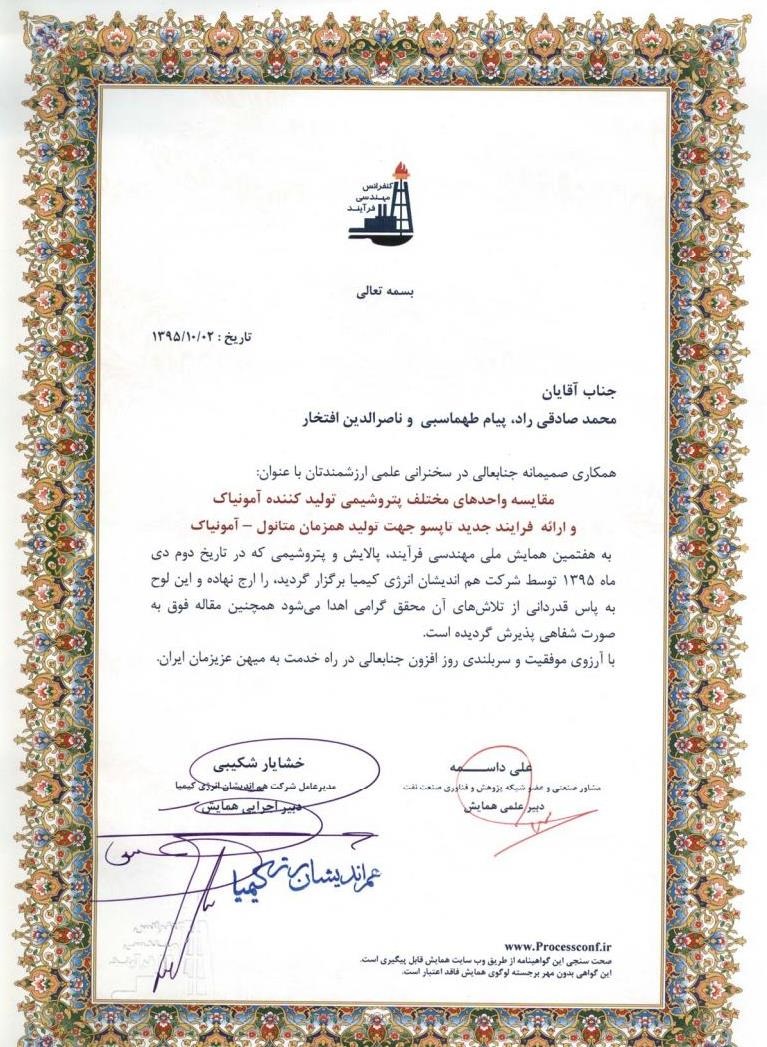Mohammad Sadeghirad1 Payam Tahmasebi2 Nassereddin Eftekhar3
1: Project Engineering Manager, NDEC
2: Process Project Engineer, NDEC
3: Managing Director, NDEC
Abstract
Foreseeing a proper strategy for the development of refinery and petrochemical units in oil rich countries is always one of the most economically crucial issues. Recent falls in oil and gas prices, and in the mean time, increase of construction costs of petrochemical plants, and greater number of similar installed units in oil-rich countries of the Middle East, have created hovac in the economic feasibility of petrochemical projects in the region. However, taking into consideration uniqe competitive advantages of Iran as a country with the world's second-largest gas reserves, and direct access to the open sea for exporting value-added products derived from natural gas, installation of more petrochemical plants like Ammonia still looks like economically attractive. In this article, the process of each different Ammonia licensor is concisely presented and then compared with others. The study indicates that most of Ammonia plants installed in the world and in Iran as well were built under the license of KBR. In the second part of the article, the production capacity and licensor of each Ammonia unit in Iran would be depicted. Then, the process of Ammonia production based on KBR license is briefly presented and simulated by HYSYS software. Peng-Robinson is used as a state equation in the simulation and the results are compared with the actual information of the third unit of PARDIS-Assaluyeh Ammonia Petrochemical Plant; the largest Urea-Ammonia complex in the Middle East. Finally, in line with recent expressed concerns about the future market of Urea, the Methanol-Ammonia units are breifed and the new TOPSOE technology as a sample of Methanol-Ammonia process is presented.
Keywords: Petrochemical projects, Ammonia plants, Ammonia process, HYSYS, Methanol-Ammonia, KBR, TOPSOE
